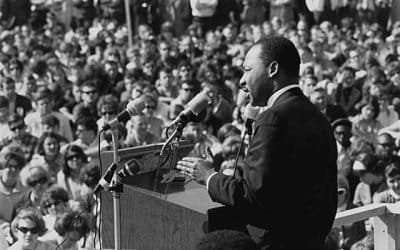About a fortnight ago, Mrs. Williams alerted me to an episode of Oprah Winfrey’s show titled “Inside the Lives of People Living on Minimum Wage.” After a few minutes of watching, I turned it off, not because of the heartrending tales but because most of what was being said was dead wrong.
Let’s look at it.
The show claims that 30 million Americans earn the minimum wage of $5 an hour. Actually, the federal minimum wage is $5.15 an hour, and 17 states mandate a higher minimum wage that approaches $7 an hour. At one point, Oprah did manage to clear up this aspect of the show’s errors.
The U.S. Department of Labor reports: “According to Current Population Survey estimates for 2004, some 73.9 million American workers were paid at hourly rates, representing 59.8 percent of all wage and salary workers. Of those paid by the hour, 520,000 were reported as earning exactly $5.15.”
Workers earning the minimum wage or less tend to be young, single workers between the ages of 16 and 25. Only about two percent of workers over 25 years of age earn minimum wages.
According to the U.S. Bureau of Labor Statistics: Sixty-three percent of minimum wage workers receive raises within one year of employment, and only 15 percent still earn the minimum wage after three years. Furthermore, only 5.3 percent of minimum wage earners are from households below the official poverty line; forty percent of minimum wage earners live in households with incomes $60,000 and higher; and, over 82 percent of minimum wage earners do not have dependents.
The U.S. Department of Labor also reports that the “proportion of hourly-paid workers earning the prevailing Federal minimum wage or less has trended downward since 1979.”
Another issue that’s not often taken into consideration is there’s a difference between what a worker takes home in pay and his total compensation. Employers must pay for legally required worker benefits that include Social Security, Medicare, unemployment insurance, workers’ compensation, health and disability insurance benefits, and whatever paid leave benefits they offer, such as vacations, holidays and sick leave. It’s tempting to think of higher minimum wages as an anti-poverty weapon, but such an idea doesn’t even pass the smell test. After all, if higher minimum wages could cure poverty, we could easily end worldwide poverty simply by telling poor nations to legislate higher minimum wages.
Poor people are not poor because of low wages. For the most part, they’re poor because of low productivity, and wages are connected to productivity. The effect of minimum wages is that of causing unemployment among low-skilled workers. If an employer must pay $5.15 an hour, plus mandated fringes that might bring the employment cost of a worker to $7 an hour, does it pay him to hire a person who is so unfortunate as to have skills that permit him to produce only $4 worth of value per hour? Most employers would view hiring such a person as a losing economic proposition.
Two important surveys of academic economists were reported in two issues of the American Economic Review, May 1979 and May 1992. In one survey, 90 percent, and in the other 80 percent, of economists agreed that increasing the minimum wage causes unemployment among youth and low-skilled workers.
Minimum wages can have a more insidious effect. In research for my book “South Africa’s War Against Capitalism” (1989), I found that during South Africa’s apartheid era, racist unions, who’d never admit blacks, were the major supporters of higher minimum wages for blacks.
Gert Beetge, secretary of South Africa’s avowedly racist Building Worker’s Union, in response to contractors hiring black workers, said, “There is no job reservation left in the building industry, and in the circumstances I support the rate-for-the-job [minimum wages] as the second best way of protecting our white artisans.” Racists recognized the discriminatory effects of mandated minimum wages.
I’m trying to figure whether ineptitude explains the errors in Oprah’s show or a deliberate attempt to mislead.




